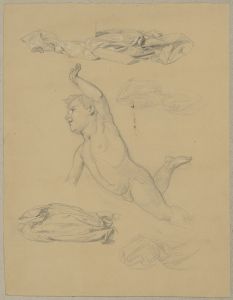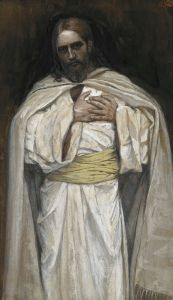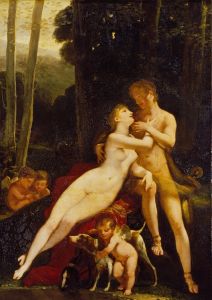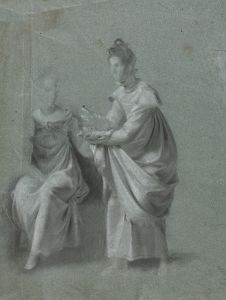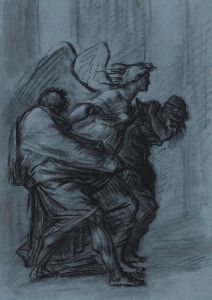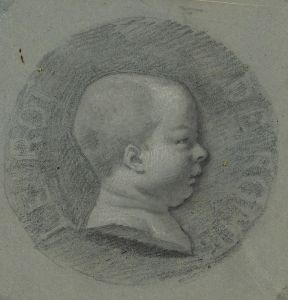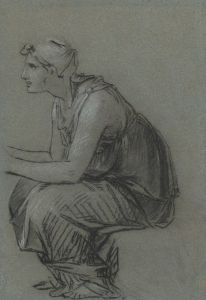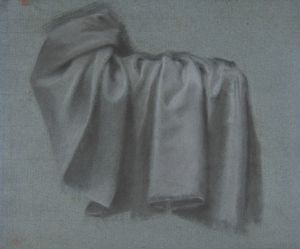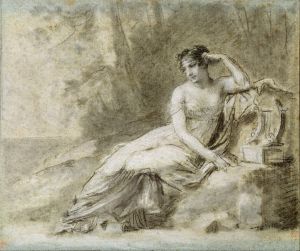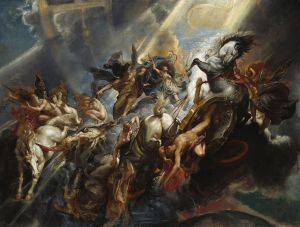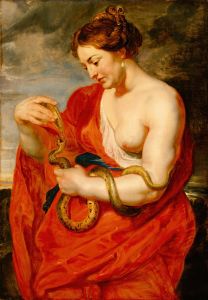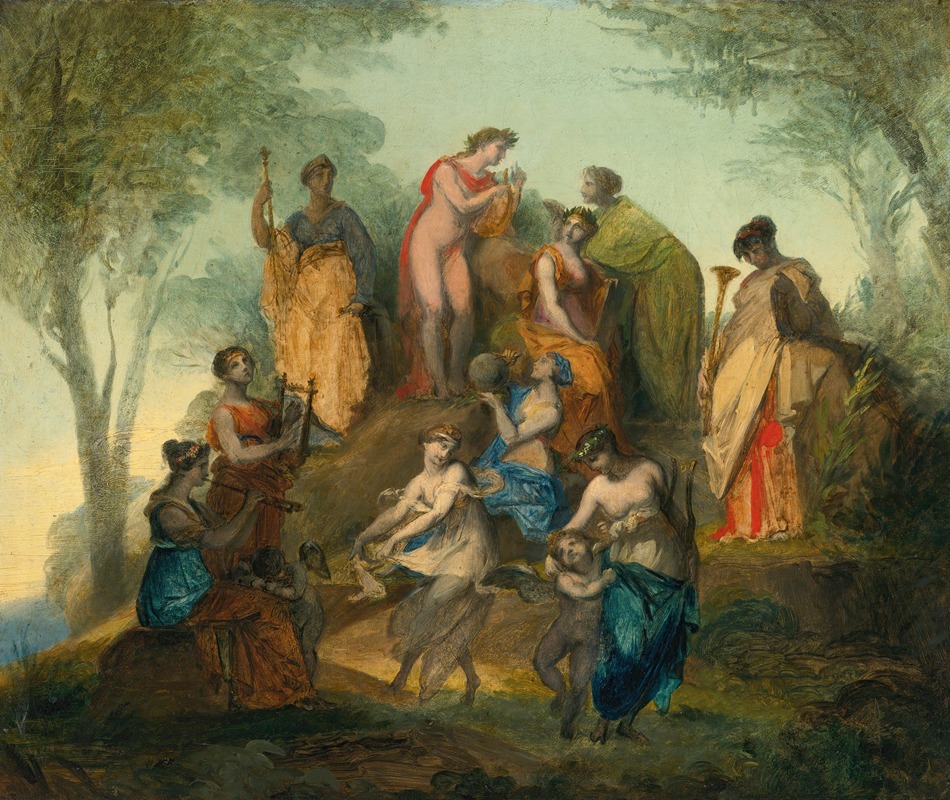
Apollo And The Nine Muses On Mount Parnassus
A hand-painted replica of Pierre-Paul Prud'hon’s masterpiece Apollo And The Nine Muses On Mount Parnassus, meticulously crafted by professional artists to capture the true essence of the original. Each piece is created with museum-quality canvas and rare mineral pigments, carefully painted by experienced artists with delicate brushstrokes and rich, layered colors to perfectly recreate the texture of the original artwork. Unlike machine-printed reproductions, this hand-painted version brings the painting to life, infused with the artist’s emotions and skill in every stroke. Whether for personal collection or home decoration, it instantly elevates the artistic atmosphere of any space.
Pierre-Paul Prud'hon was a French Romantic painter, renowned for his allegorical and mythological compositions. One of his notable works is "Apollo and The Nine Muses on Mount Parnassus." This painting exemplifies Prud'hon's mastery in capturing the ethereal beauty and classical themes that were prevalent during his time.
The painting depicts the Greek god Apollo, who is associated with music, poetry, and the arts, surrounded by the Nine Muses on Mount Parnassus. In Greek mythology, Mount Parnassus is considered a sacred place, home to the Muses, who are the inspirational goddesses of literature, science, and the arts. Each Muse is associated with a specific domain of the arts and sciences, and they are often depicted together with Apollo, who leads them.
Prud'hon's work is characterized by its soft, delicate use of light and shadow, which creates a dreamlike atmosphere. His style is often compared to that of the Italian Renaissance, particularly the works of Leonardo da Vinci, due to his emphasis on grace and harmony. In "Apollo and The Nine Muses on Mount Parnassus," Prud'hon employs a gentle color palette and fluid lines to convey the serene and harmonious gathering of these mythological figures.
The composition of the painting is carefully balanced, with Apollo positioned centrally, drawing the viewer's attention. The Muses are arranged around him, each engaged in activities that reflect their respective domains. For instance, Calliope, the Muse of epic poetry, might be depicted holding a writing tablet, while Euterpe, the Muse of music, could be shown with a flute. This arrangement not only highlights the individual characteristics of each Muse but also emphasizes their collective role as sources of inspiration.
Prud'hon's work often reflects the Romantic era's fascination with classical antiquity and its ideals of beauty and harmony. His paintings are known for their emotional depth and the ability to evoke a sense of wonder and introspection. "Apollo and The Nine Muses on Mount Parnassus" is no exception, as it invites viewers to contemplate the divine nature of artistic inspiration and the timeless connection between the arts and the divine.
While specific details about the painting's creation, such as its exact date or current location, are not widely documented, Prud'hon's contribution to the Romantic movement and his influence on subsequent generations of artists are well recognized. His ability to blend classical themes with a Romantic sensibility has secured his place in the history of art.
Overall, "Apollo and The Nine Muses on Mount Parnassus" is a testament to Pierre-Paul Prud'hon's skill in capturing the essence of mythological subjects and his enduring legacy as a painter who bridged the gap between the classical and Romantic traditions.





